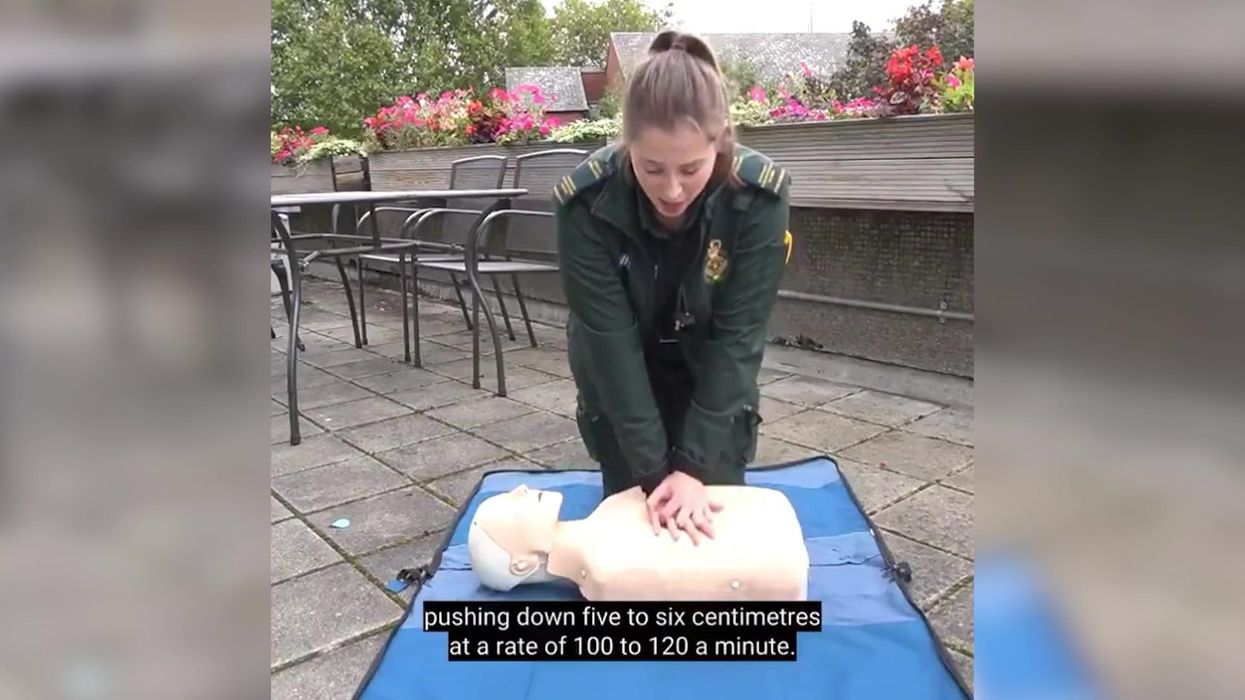London Ambulance Service has shared a short video that could help you save a life.
The short clip shares what passersby can do to help someone suffering a cardiac arrest.
Cardiac arrest occurs when the heart stops pumping and can be caused by a heart attack (when an artery becomes obstructed), trauma, or choking.
The most common sign of a heart attack is chest pain, though there are other symptomssuch as pain in other parts of the body.
Sign up to our free Indy100 weekly newsletter
If someone is suffering from cardiac arrest or a heart attack, call 999 for an ambulance immediately.
In the clip, the paramedic said it is important the person receives treatment - from anyone - until the ambulance crews arrive.
In a cardiac arrest, every second counts and without lifesaving intervention \u2013 which can be done by passers-by while medics are on their way \u2013 the chances of survival decrease by about 10% with every passing minute.\n\nPlease watch and share this video.— London Ambulance Service \ud83d\udc99 (@London Ambulance Service \ud83d\udc99) 1644912000
If the area is safe to approach and if the patient is unresponsive, she advises checking the patient’s airway by tilting their head back.
The next step is to check their breathing. If they are not breathing in ten seconds, dial 999, send for a defibrillator if one is nearby, and start CPR.
She then demonstrated how to carry out CPR.
Put one hand on top of the other in the centre of the patient’s chest and push down five or six centimetres at a rate of 100 to 120 a minute.
When the defibrillator arrives, she said there will be audible and visual prompts that will show you where to place the pads, and at this point, you will be advised to either shock or not shock.
She said call handlers will also talk you through the process until the ambulance arrives.
“We’d like you to continue doing chest compressions and using a defibrillator until the ambulance crews have arrived at scene,” she added.
On their website, London Ambulance Service says they are working hard to raise awareness for the symptoms of cardiac arrest and they also provide basic life-support training courses.
As a result, the number of people who survive cardiac arrest has risen significantly over the last few years - but more can still be done, they said.
Learn more on London Ambulance Service’s website.
Have your say in our news democracy. Click the upvote icon at the top of the page to help raise this article through the indy100 rankings.













